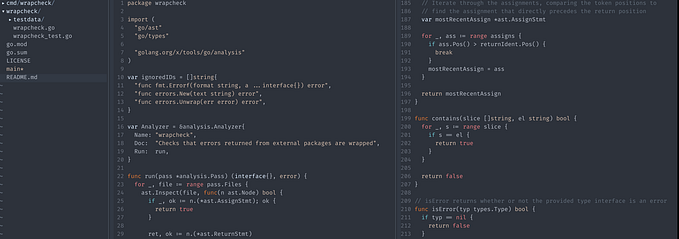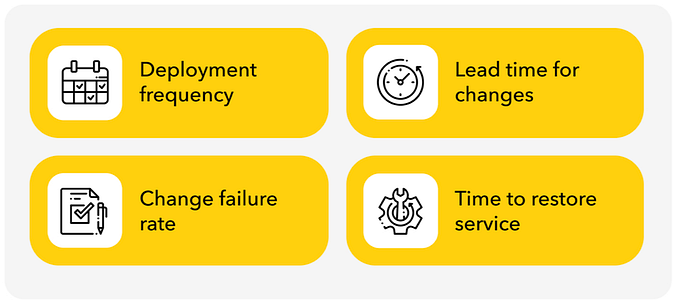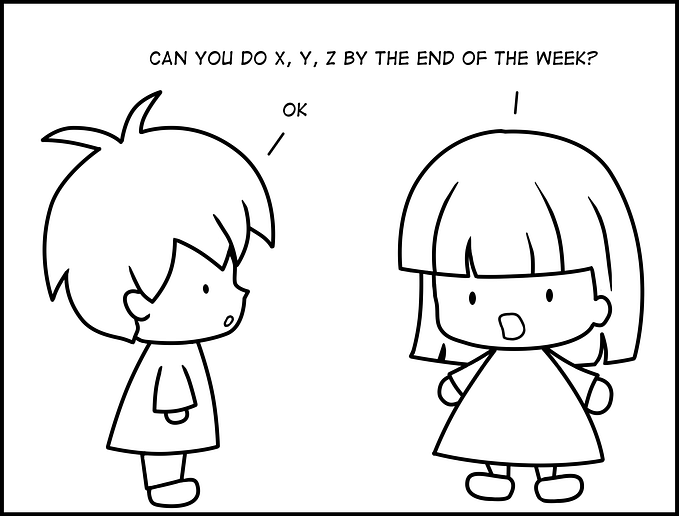I interviewed 10 UX applicants… and then there were none
In this tough job market, hiring managers have their own difficulties in finding the right fit. Here are 7 tips for job seekers from my real-life experience.
Last time, I shared my story “I reviewed 100 resumes for a UX job, and only 8 made the cut.” The article resonated strongly with job seekers and hiring managers, and I received valuable feedback and comments from them.
There was also a request for a sequel, prompting me to write about what happened next. While the previous article focused on crafting better documents to secure interview opportunities, this time it delves into how to navigate the interview process.
After the 100 resume review
After reviewing 100 resumes and selecting 8 candidates, I expanded my search and added 2 more. In total, I interviewed 10 individuals, but unfortunately, I couldn’t find the right fit among them.
In this article, I’ll be sharing how these 10 interviews didn’t go as expected. However, I want to emphasize that my intention is not to disrespect the applicants in any way.
My goal is to provide job seekers with a deeper understanding of the hiring process, offering perspectives through the lens of a hiring manager to help them navigate it with greater clarity.
Into the interviewer’s mind
Interviewees often experience anxiety and fear being judged or attacked during interviews. However, the reality is quite the opposite: not many interviewers have a mindset of “I’m going to watch them fail (evil laugh).”
Typically, hiring managers are overwhelmed with their workload, which is why they are hiring in the first place. They genuinely want you to perform well so they can complete the hiring process and get back to their work.
Also, they have already selected you based on your documents and must be secretly hoping that their judgment is proven right.
That means you and your interviewer share the same goal when the interview starts: hiring you. Remember, they are prepared to accept you if you meet their expectations.
1. Introduce you briefly, and relate it to work topics
99% of interviews begin with an introduction, which is already a crucial task. When it comes to self-introduction, remember two key points.
First, keep it concise. Introduce yourself within 1 to 2 minutes, with a maximum of 3 minutes. Spending too much time solely on the introduction is not good time management, as there are other questions awaiting. Keep in mind that interviewers are busy. They want to quickly understand your background in a couple of minutes.
Secondly, focus on work topics. You can be very proud of your whipping cream beating skills, but that’s not what your UX manager wants to hear. I believe the best way to introduce yourself is by describing your current job or situation first, then summarizing your past work history, and finally adding your future career plan, which can create a smooth connection to the next question.
One of the interviewees spent more than 10 minutes telling unrelated life stories, so I had to interrupt her. At that point, I already had a strong feeling that things weren’t going well.
2. Keep your energy level high
There were interviewees who spoke in a monotonous tone with low energy levels.
When I learned to play the piano, my teachers taught me that the beats should go like “strong-weak-strong-weak.” The same principle applies to speaking. If you speak in a “weak-weak-weak-weak” tone, it becomes difficult for others to understand what you’re trying to convey.
Moreover, when you don’t show any passion or energy, it gives the interviewer the impression that you are not enthusiastic about the job or working with them.
As an agency worker, I also had concerns that this style of communication might not yield good results in client interactions.
3. Respond directly to the question asked
I was surprised by how many times I had to think, “That’s not the question I asked.” It is evident that listening carefully to the question and providing an answer to the specific question asked should be straightforward tasks, but many interviewees struggled with this.
While it’s acceptable to segue or explore related topics to some extent, it’s important not to lose focus. Prioritize answering the question first, and then you can expand on reasons and provide background information.
4. Play catch ball, not dodgeball
Interviews typically last 30–60 minutes. This means that if you spend 10 minutes talking alone and realize that you’ve gone in the wrong direction, you can’t easily rectify the situation.
However, if you provide a response for about a minute, ask if it aligns with what the interviewer is looking for, and correct it if needed, you still have plenty of time to recover.
Think of it as a catch ball: catch the question, respond, and keep the conversation going. Avoid playing dodgeball, where you simply throw responses in one direction.
Pay attention to the interviewer’s reaction, assess their engagement, and create opportunities for two-way interaction by asking, “Do you have any comments or questions so far?”
5. Connect the dots of your portfolio elements
There were interviewees with impressive portfolios that included well-written project backgrounds, clear roles, and extensive research findings.
However, not many applicants were able to connect their outputs and present a cohesive story. Many of them showcased separate portfolio elements, such as “This is the competitor study I’ve done,” “These are the personas I created,” and “This is the user journey,” without establishing strong logical connections between them.
Saying “I have done a lot of research” alone is not sufficient to prove that you can be a compelling UX professional. The storytelling aspect should focus on how you have derived valuable insights by observing consistent patterns from research A, B, and C.
Furthermore, it is crucial to explain why you chose specific research methodologies. Your decision should be based on thoughtful considerations rather than simply following what others are doing.
6. Demonstrate creativity and originality
After showcasing their research findings, many interviewees presented final designs that surprisingly resembled existing solutions such as Uber, Tinder, LinkedIn, Google, and so on.
This indicates a failure to generate original ideas based on research and a lack of creativity in differentiating from established solutions. Including competitor research, personas, and user journeys simply because others are doing so, and repurposing well-known products, will not demonstrate your ability to create something original and inventive.
For example, I once had an applicant for an intern position who presented an idea for a unique delivery service targeting the younger generation. Instead of proposing yet another app similar to Deliveroo or Foodpanda, he suggested that delivery personnel wear special costumes, such as Santa Claus or big teddy bears. He even showed me a photo depicting the delivery scene. The concept stood out as something different and made me laugh. He is now working as an intern with me.
Highlight your individuality. This can involve presenting your unique perspective, expertise in a specific area you are passionate about, or even an ability to bring fresh or amusing ideas.
7. Ask relevant questions when appropriate
One applicant asked me this question when given the opportunity to ask: “Do you often work late?”
I understand the importance of work-life balance and the consideration of the working environment. I am willing to provide an explanation if the timing and occasion are appropriate.
However, I couldn’t help but think that this might not have been the most appropriate initial question for the first interview. What would be the purpose of the answer if the job isn’t offered? Wouldn’t it be more suitable to ask when the likelihood of securing the position is more certain?
This question left me with the impression that the applicant’s focus might not be on the work itself. It could be more beneficial to center the discussion around work-related matters, especially during an interview that is focused on your work history and portfolio walkthrough.
If you have inquiries regarding specific conditions or policies, it would be more suitable to address them with the HR department. I’m not suggesting that you refrain from asking non-work-related questions entirely. Just keep in mind the best timing and occasion to ask them.
I don’t believe my standards were ridiculously high. I simply needed to find personnel who could effectively manage client communication, actively listen to questions, provide relevant and direct answers, and avoid rambling for too long.
I sought someone who understood their strengths and knew how to highlight their advantages by offering something unique compared to others. Someone who had a good understanding of what is appropriate and inappropriate in a business setting.
Unfortunately, I was unable to find such a candidate, and I continue to search for talents while managing a heavy workload. I often find myself thinking, “When can I stop hiring and focus solely on UX work?”
I hope that sharing my experience will help readers gain insight into the perspective of a hiring manager. Wish me luck in finding a suitable talent in the near future!










